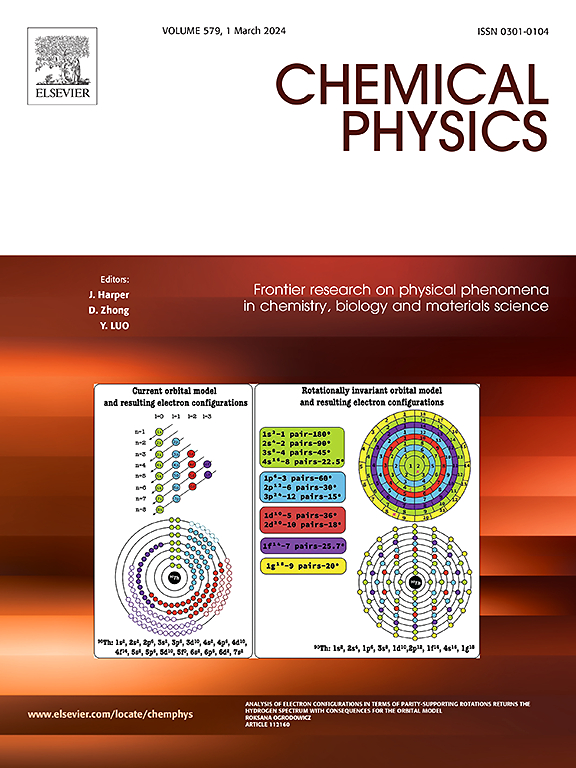First-principles investigation of electronic structure, optical, mechanical properties, and strain effects of double perovskite Cs2LiSbX6(X = Cl, Br, I)
IF 2.4
3区 化学
Q4 CHEMISTRY, PHYSICAL
引用次数: 0
Abstract
We conducted an in-depth investigation on the lattice structure, optoelectronic properties, and elastic constants of halide double perovskite Cs2LiSbX6 (X = Cl, Br, I) based on first principles calculations. The computed elastic and mechanical properties demonstrate that all three materials exhibit mechanical stability, alongside excellent ductility and anisotropic behavior. In addition, these three materials Cs2LiSbCl6, Cs2LiSbBr6, and Cs2LiSbI6 exhibit indirect band gaps of 3.65 eV, 3.05 eV and 2.29 V, respectively, and are classified as wide bandgap materials. The optical characteristics of Cs2LiSbX6 were evaluated through the computation of several key parameters: the real component of the dielectric function (ε1(ω)), the imaginary component of the dielectric function (ε2(ω)), the refractive index (n(ω)), and the absorption coefficient (α(ω)). In addition, the strain engineering, spanning from −6 % to 6 %, reveals that compressive strain(tensile strain) narrows(widens) the bandgap, leading to a blueshift(redshift) in the absorption edge. These findings provide theoretical support for adjusting the bandgaps of Cs2LiSbX6 perovskites.

双钙钛矿Cs2LiSbX6(X = Cl, Br, I)的电子结构、光学、力学性能及应变效应的第一性原理研究
基于第一性原理计算,对卤化物双钙钛矿Cs2LiSbX6 (X = Cl, Br, I)的晶格结构、光电性能和弹性常数进行了深入研究。计算的弹性和力学性能表明,这三种材料都具有机械稳定性,以及出色的延性和各向异性行为。此外,这三种材料Cs2LiSbCl6、Cs2LiSbBr6和Cs2LiSbI6的间接带隙分别为3.65 eV、3.05 eV和2.29 V,属于宽带隙材料。通过计算介电函数实分量(ε1(ω))、介电函数虚分量(ε2(ω))、折射率(n(ω))和吸收系数(α(ω))等关键参数,评价了Cs2LiSbX6的光学特性。此外,从- 6%到6%的应变工程表明,压缩应变(拉伸应变)使带隙变窄(变宽),导致吸收边缘出现蓝移(红移)。这些发现为调整Cs2LiSbX6钙钛矿的带隙提供了理论支持。
本文章由计算机程序翻译,如有差异,请以英文原文为准。
求助全文
约1分钟内获得全文
求助全文
来源期刊

Chemical Physics
化学-物理:原子、分子和化学物理
CiteScore
4.60
自引率
4.30%
发文量
278
审稿时长
39 days
期刊介绍:
Chemical Physics publishes experimental and theoretical papers on all aspects of chemical physics. In this journal, experiments are related to theory, and in turn theoretical papers are related to present or future experiments. Subjects covered include: spectroscopy and molecular structure, interacting systems, relaxation phenomena, biological systems, materials, fundamental problems in molecular reactivity, molecular quantum theory and statistical mechanics. Computational chemistry studies of routine character are not appropriate for this journal.
 求助内容:
求助内容: 应助结果提醒方式:
应助结果提醒方式:


